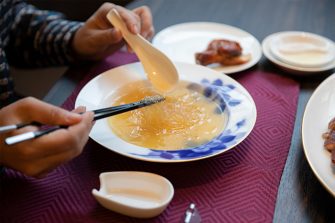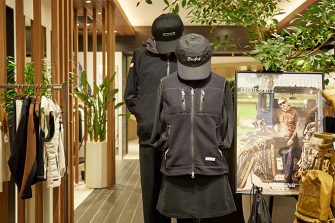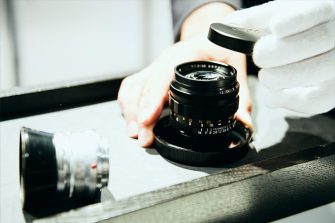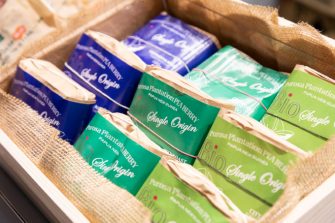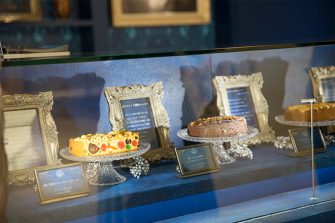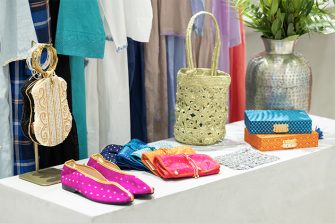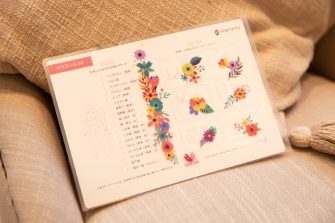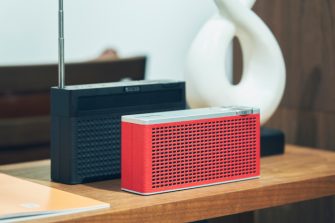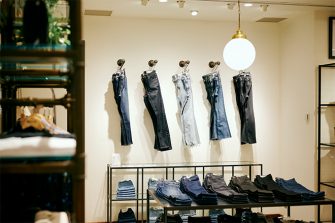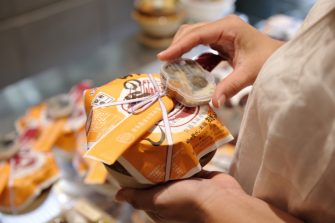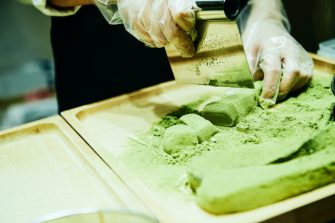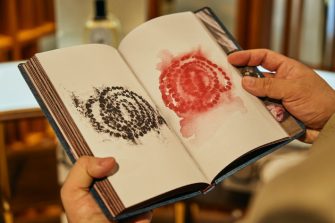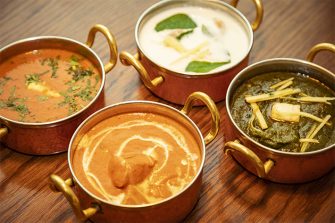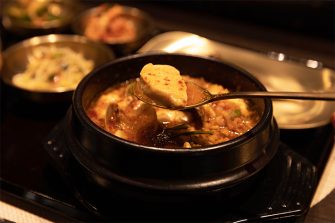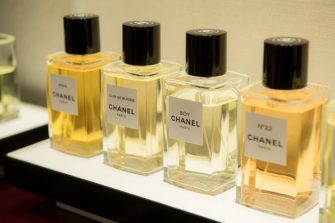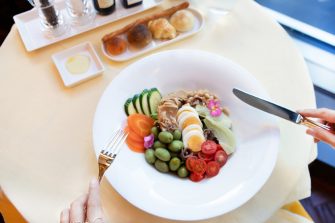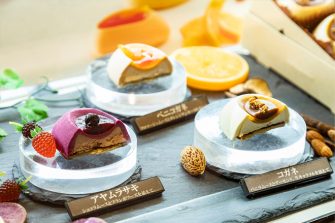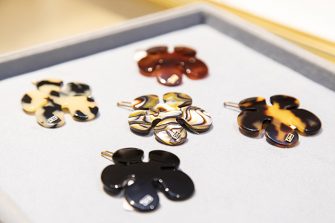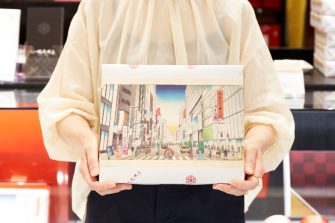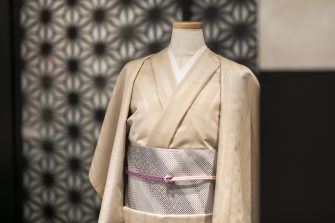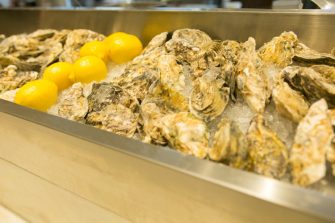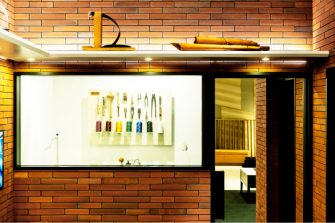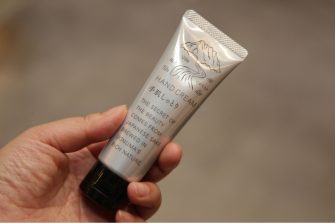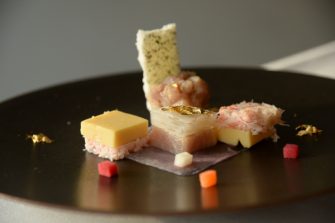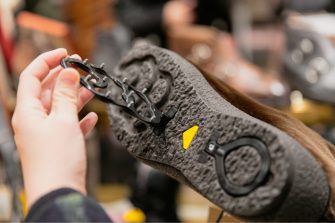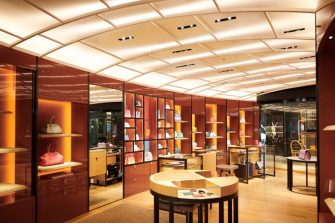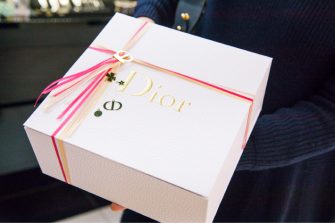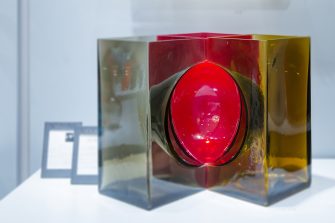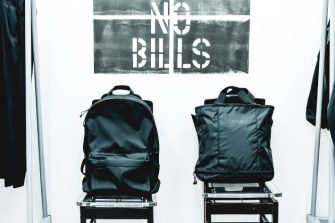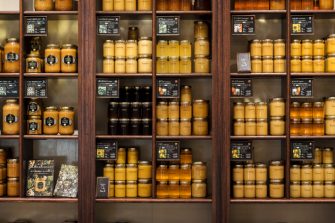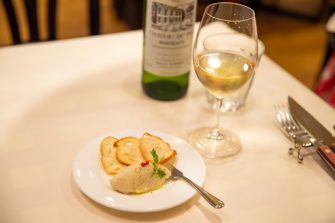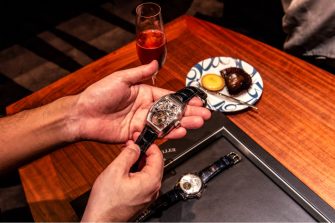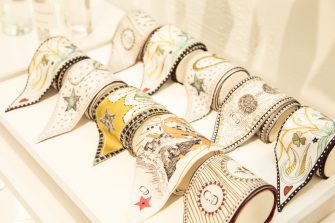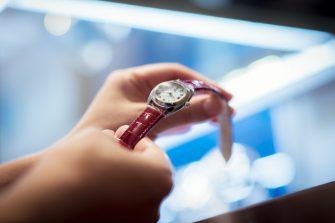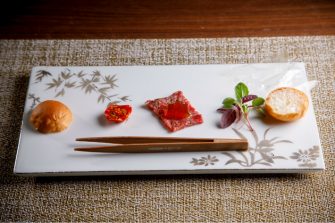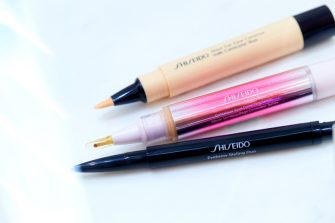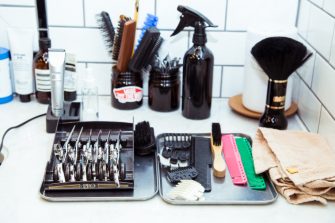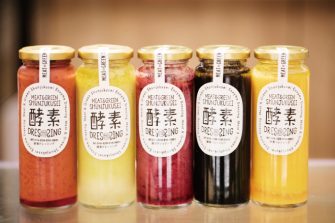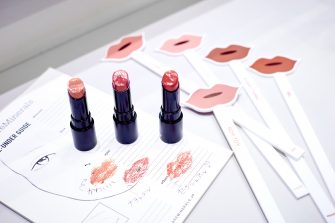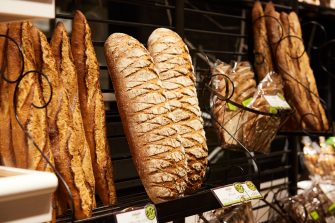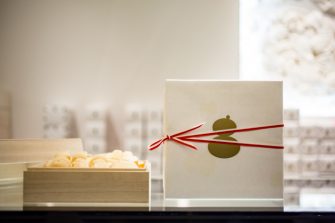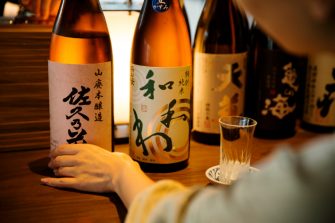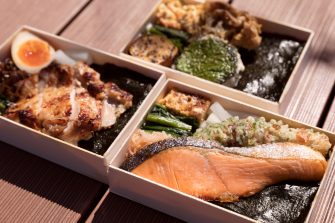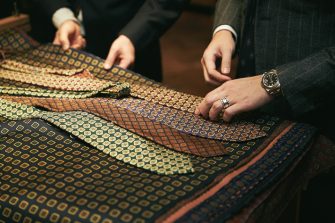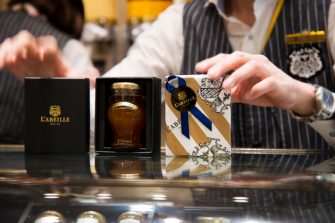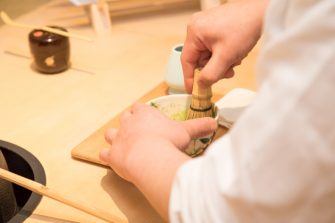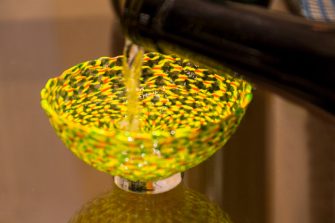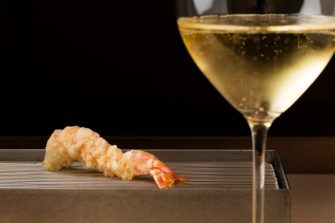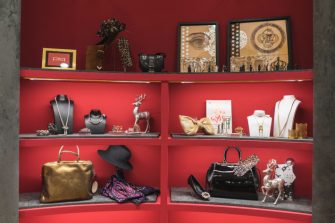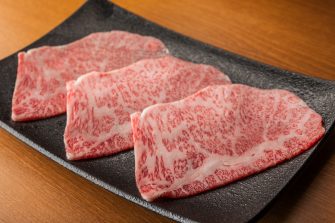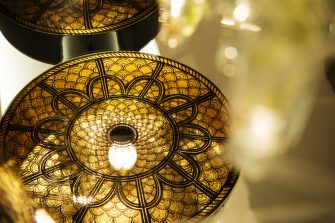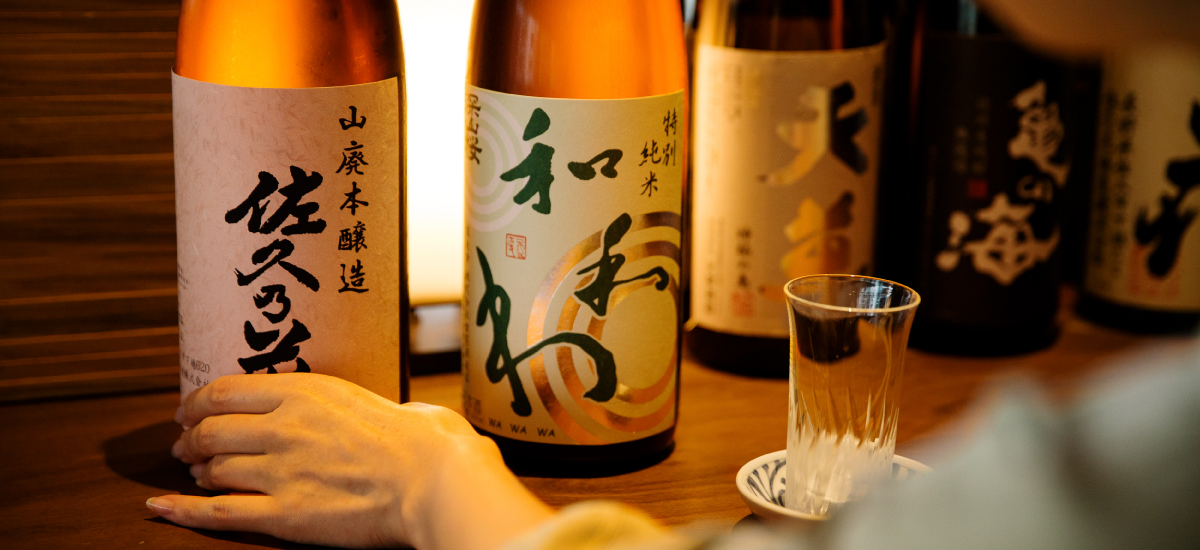

GINZA SIX EDITORS
ファッション、ジュエリー&ウォッチ、ライフスタイル、ビューティ、フード…
各ジャンルに精通する個性豊かなエディターたちが、GINZA SIXをぶらぶらと
歩いて見つけた楽しみ方を綴ります。
家でも店でも、お酒が主役のGINZA SIX巡り A Highly Sake-Oriented Tour of GINZA SIX
外川 ゆい
GINZA SIX EDITORS Vol.36
天職だと心から思うフードジャーナリストの仕事。美食と美酒に広く携わるなかでも、愛してやまないのが日本酒です。となるとGINZA SIXの中で自然に足が向くのが、地下2階の奥にある酒屋「いまでや銀座」。オープン当初からもう何度訪れたことか、数え切れません。そして、GINZA SIXが好きだなぁと思うのは、私が愛してやまないお酒のお供も一緒にお買い物できるところ。今回は、私なりのお酒との付き合い方も織り交ぜつつ、ご案内しましょう。
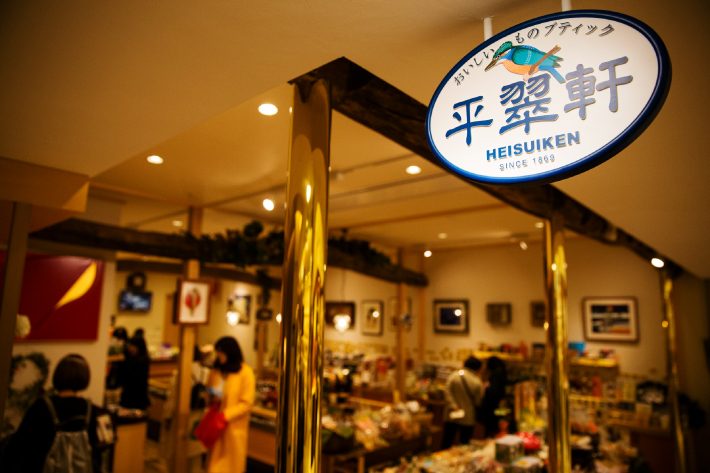
まず向かったのはいまでやの隣にお店を構える「銀座 平翠軒」。本店は岡山県の倉敷美観地区にあり、森田酒造(株)の三代目が酒造場内にある大正時代に建てられた倉庫をショップに。“食のセレクトショップ”には、全国各地の美味とオリジナル商品がずらり。すべて店主・森田昭一郎さんが自分の舌で味わった逸品とあって、さすがのレベルの高さで目移りしてしまうものばかり。「この棚全部ください!」と大人買いしたくなる気持ちを押さえ、今回は日本酒に合うアイテムを探すことに……。
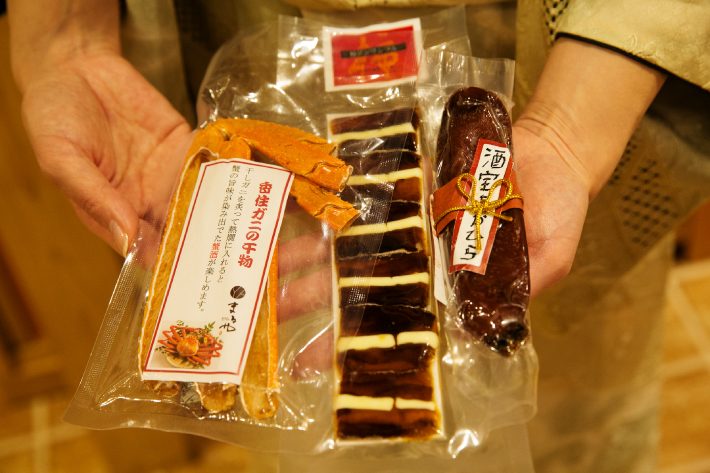
仕事柄、原稿の締切に追われていなければ、毎晩のように会食が入っています。帰宅後、もう少し日本酒が飲みたいなぁというモードになった時にぴったりなのがこんな逸品たち。「酒宝あかひら」(グラム売り)は、鱈やぼらなどで作ったカラスミを純米酒粕に漬け込んだ森田酒造オリジナル商品です。薄くスライスしてそのままいただくほか、贅沢にパスタに削るのもおすすめ。平翠軒オリジナルの「干し柿のバターサンド」(¥443/以下全て税込価格)は、幾重にも重ねて濃厚なバターと合わせたもの。そして、「香住かにの干物」(¥972)は、お燗に入れればかに酒になるという優れもの。
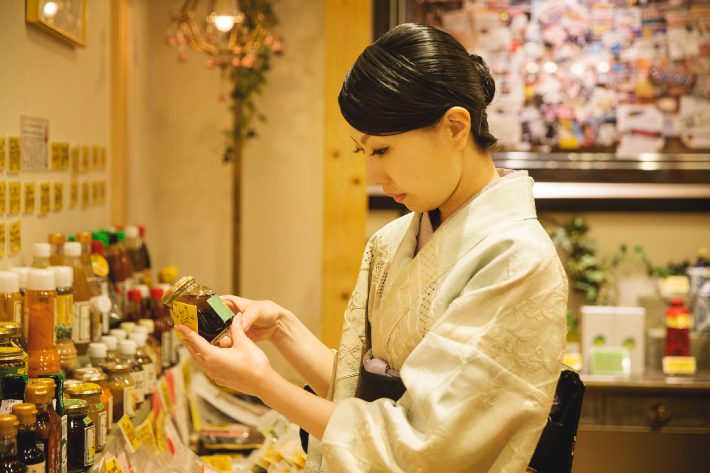
手に取って真剣にチェックしているのは、広島にあるミシュランの星付き「おばんざい木むら」による「ちりめんドレッシング」(¥821)。瓶のなかには立派な走島産の活ちりめんがたっぷり入っていて、まるで泳いでいるよう。熟成にんにく醤油とオリーブオイルで作られている万能ドレッシングです。
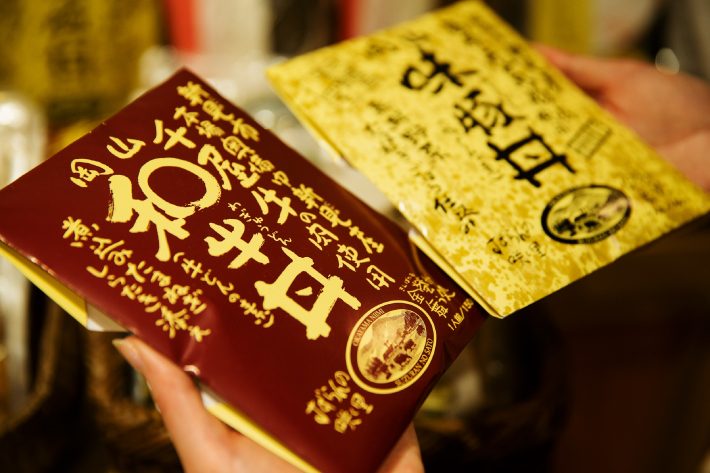
「千屋牛」の名前に反応し、思わず手に取ったのが「岡山和牛丼」(¥648)。以前から県外にあまり出回らない絶品のブランド牛と聞いていたからです。隣に並んでいた「味豚丼」(¥588)も同じく岡山県のもの。お酒を飲んだ後、ちょっと贅沢な締めごはんが食べたい時に最適ですね。
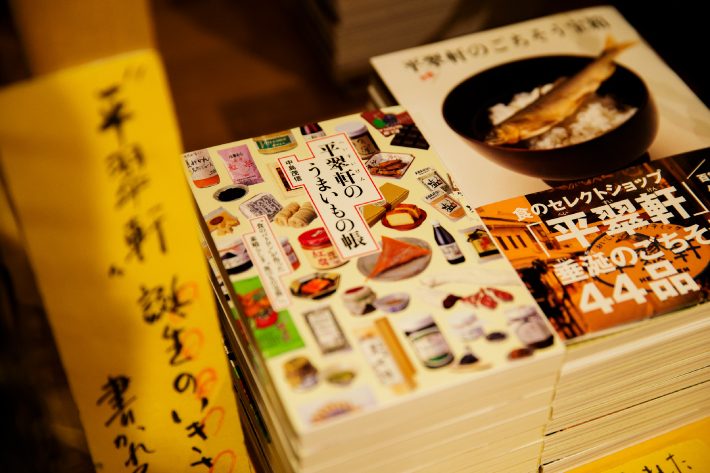
『平翠軒のうまいもの帳』は、我が家の本棚に10年近く前からある一冊。美味しいものは、その背景を知るとより美味しくなります。こちらを捲りながら食べたり、次に買いたいものを探したり。商品の多さに迷ってしてしまう方にもおすすめのガイドブックとなります。
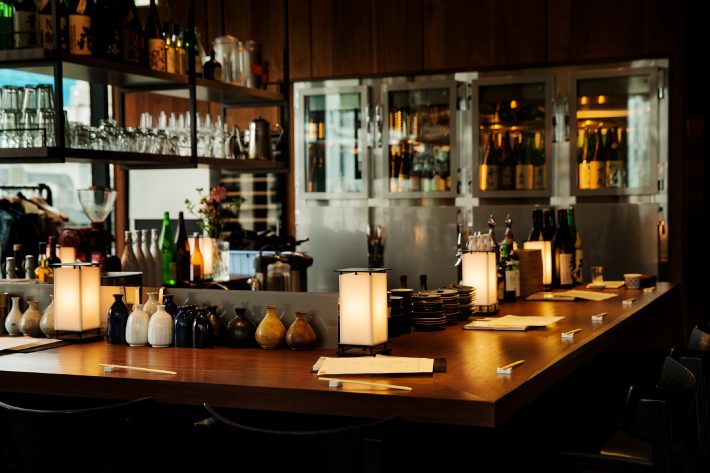
そろそろ小腹が空き、お酒が恋しくなってきたので、エレベーターで6階へ。「銀座 真田 SIX」は、信州の食材にスポットを当てたお店。大きな暖簾をくぐり、立派な石臼と蕎麦の打ち場を横目に店内へ進みます。カウンターとテーブルを合わせて約100席。ひとりでふらりと訪れても温かく迎えてくれ、和まされます。

席に着き、早速お酒を注文することに。こちらでは、食材同様に日本酒も信州に特化した13種類をラインアップ。長野は全国でも特に酒蔵が多い県で、女性杜氏(日本酒の作り手)が多い地域です。メニューもチェックしますが、詳しいスタッフさんがいる場合は、おすすめをうかがうようにしています。その方が、その時に一番いい状態のものをいただける気がしますし、新しい発見をさせてもらえることも多いので。
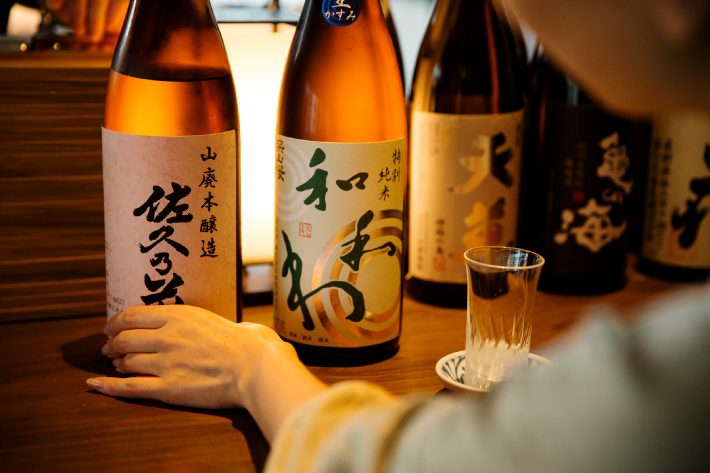
おすすめしていただいたのは、お燗にしても美味しそうな「佐久乃花 山廃本醸造」とフレッシュなかすみ生酒「和和和(わわわ)特別純米 ひとごこち」。まずは、生酒の方からいただくことに。日本酒は、小グラス(90cc)、中グラス(150cc)、二合(360cc)の3つの量から選べるのも嬉しいところ。その時の気分やシチュエーションにあわせてどうぞ。
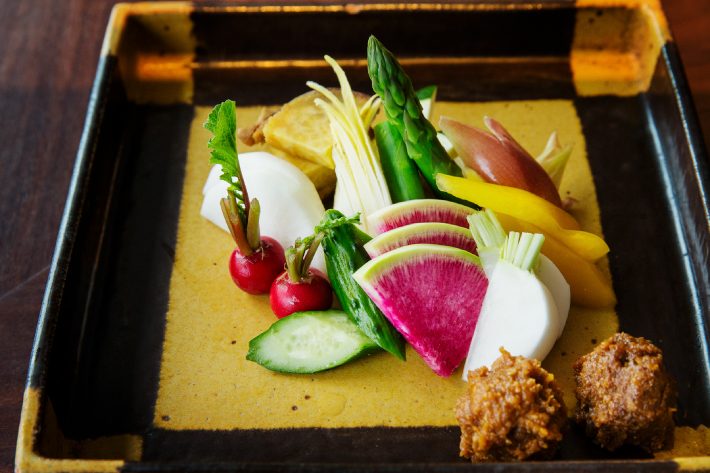
最初のお料理は「信州産生野菜の盛り合わせ 味噌添え」(¥1,728)。完全無農薬にこだわった上田市の「そらや」から仕入れる野菜が行儀よく並び、2種類の味噌が添えられています。右が蕎麦味噌、左が大寒味噌。料理とお酒、同じ土地で育ったもの同士は、とても自然な相性の良さです。
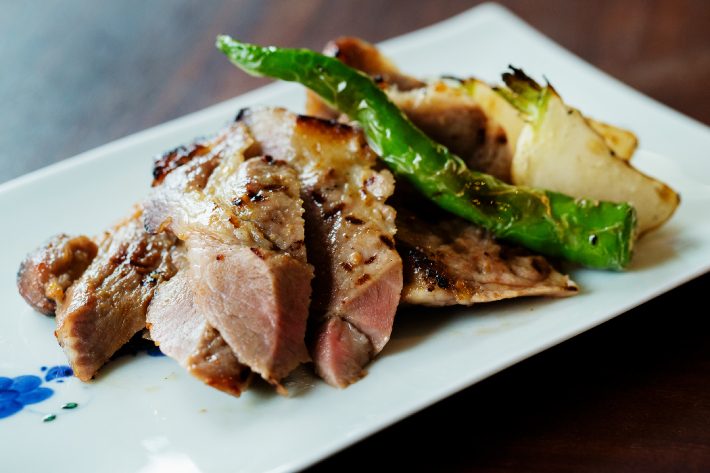
続いては「信州豚の味噌漬け焼き」(¥1,836)。お米を食べて育った米豚を信州味噌で6時間漬け込んでいます。たっぷり盛り付けられていますが、美味しさにぺろりと完食。お肉料理をいただくときは、口に入れた時に脂とまろやかに溶け合うよう、常温やお燗を好みますね。
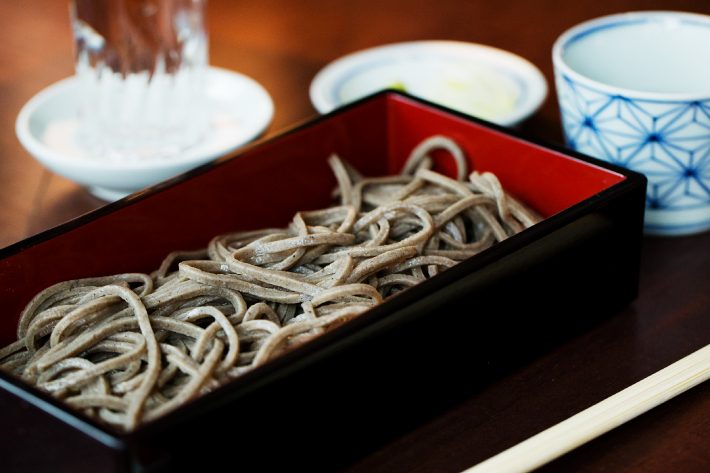
締めには、数量限定「十割田舎そば」(¥1,296)。こちらは、店の石臼で引いて手打ちしている滋味深い味わい。つゆはキリリとした江戸前より角がなく、鰹出汁の香りが立っています。日本酒と蕎麦って、どうしてこんなに合うんだろうなどと気分よくほろ酔いに。蔵元から直送している東京ではレアな「中乗さん 特別純米」をお代わりしたいところを我慢して次のお店へ。
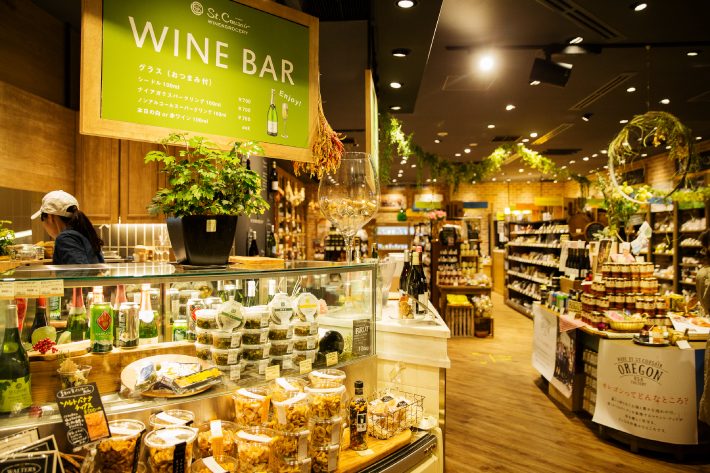
地下2階の「St.Cousair wine&grocery(サンクゼール ワインアンドグロッサリー)」は、ワインの試飲もお買い物もできる穴場な一軒。
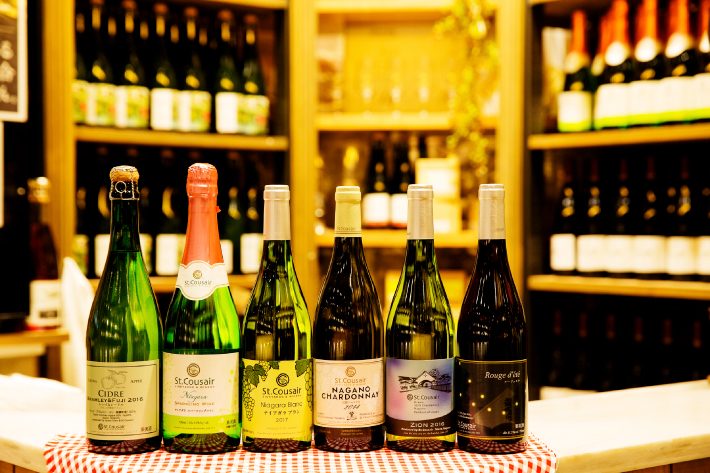
まずは奥にあるテイスティングカウンターへ。サンクゼールのワインをいただくのは初めてなので、お言葉に甘えてこの日ラインアップされていた全て自社製造という6種すべてをいただくことに。ナイアガラというぶどうで作った白ワインは、マスカットに似た香りでとても上品。「ZION(シオン)」は、どこか日本酒のようなニュアンスもあり、多彩なお料理に合いそうです。
飯綱町はりんごの産地ということもあり、シードルも秀逸。さらに赤ワインもスッと身体に馴染みます。こちらでテイスティングさせていただき、気に入ったワインを入り口付近のバーでオーダーし、じっくり味わうもよし、ボトルで購入するのもよし。テイスティングできることで、自分好みの味わいを確認できるのはとても有難いシステムですね。ちなみにGINZASIX 1周年を記念した「サンクゼールシャルドネ ネオ2000」(¥58,320)は、限定12本の発売!
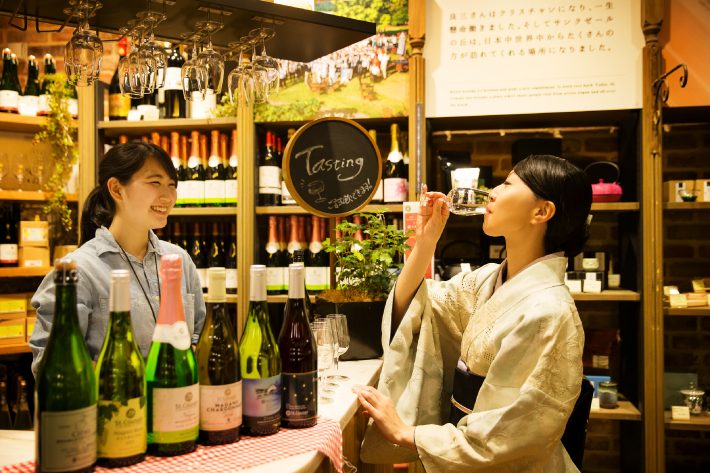
今や全国に56店舗(2018年4月現在)も展開するサンクゼールですが、始まりは夫婦で営むペンションだったとか。その後、長野県飯綱町の小高い丘の上に、ワイナリー、ジャム工場、レストラン、チャペルを作り上げたそうです。そんなお店のストーリーや店長・盛田遥さんの愛らしい笑顔で、お酒がついつい進みます。
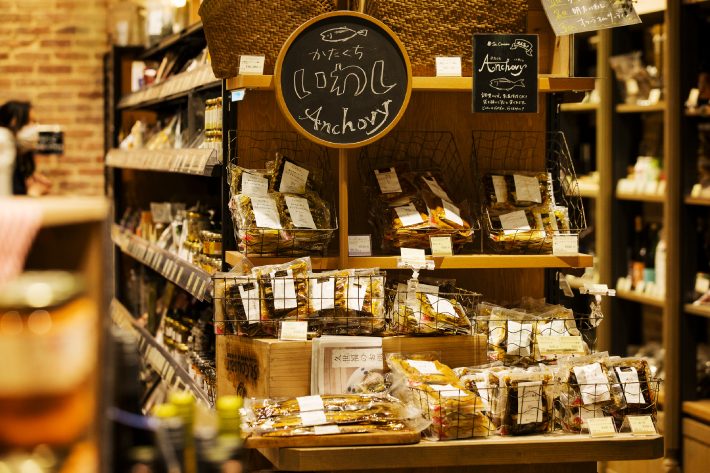
店内には、ワインのほか、お酒に合うグロッサリーが所狭しと並びます。オリジナルブランド「久世福商店」は、“ザ・ジャパニーズ・グルメストア”をコンセプトに、全国の誇り高き生産者と共同開発した商品約2000品目を取り揃えます。充実したジャムはギフトにもよさそう。棚の一角に並ぶ「銚子沖産いわしのドライトマトオイル漬け」や「銚子沖産いわしの梅煮」は、ストックしておくとおかずとしてもお酒の肴としても重宝しそうです。しかも400円前後と良心的な価格も嬉しいですね。
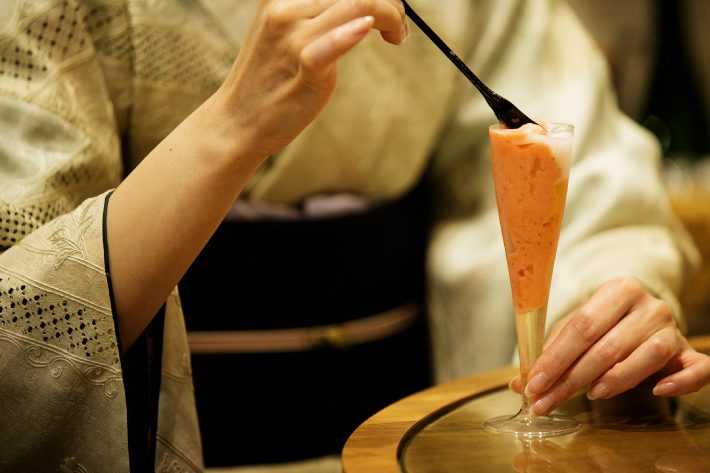
最後はデザートで締めることに。お店の入り口すぐの場所にあるカラフルなジェラートコーナーでアレコレ迷った結果、苺のジェラートが入った「スパークリングジェラート シードル」(¥540)をオーダー。これからの季節にもぴったりの爽やかさです。
お酒をテーマに巡ったGINZA SIX。銀座には全国各地、世界中のグルメが集まるといいますが、まさにそれを体感することができました。東京にいながらにして、全国の美味しいものを味わうことができるのは幸せな限り。それにしても、美食と美酒が集まるGINZA SIXは、いくら時間があっても足りません……。
Text:Yui Togawa Photos:Kazuhiro Fukumoto Edit:Yuka Okada
Food journalism is without question my calling. I know this to be true from the bottom of my heart. And while I encounter a wide range of wonderful food and adult beverages in my work, I’m especially fond of sake. So, at GINZA SIX, I naturally make a beeline to Imadeya Ginza, a liquor store located toward the back of the second belowground floor. I can’t count the number of times I’ve been here since it first opened. Something I treasure about GINZA SIX is that I can buy the sake I love along with the perfect snacks and finger food to go with that sake. I’ll introduce some of this wonderful fare to you today while mixing in my tips for enjoying sake and other beverages.

I head first to Ginza Heisuiken, next door to Imadeya. The flagship store, located in the Kurashiki Bikan Historical Quarter in Okayama Prefecture, occupies a converted storehouse built in the Taisho period on the brewery grounds by the third-generation proprietor of the Morita Shuzo brewery. A select food shop, the store features carefully selected flavors from around the country, along with the store’s own products. All items are personally sampled by store manager Shoichiro Morita. The standard of quality here makes choosing hard. I want to say—Give me everything on the shelf!—but resist the impulse and decide instead to go foraging for items that would go especially well with sake.

Given the nature of my job, unless I have a deadline to meet, I’m out eating with other people just about every night. And when I get back home and want to drink just a bit more sake, these remarkable selections are just the thing. Shuho Akahira (sold by the gram) is a Morita Shuzo original consisting of dried cod or mullet roe pickled in pure rice sake lees. It’s wonderful simply sliced and eaten as is, but I also recommend grating it liberally over pasta. The Hoshigaki Butter Sandwich (443 yen; all prices listed with tax), a Heisuiken original, is multiple layers of dried persimmons bound in rich butter. The Kasumikani no Himono (972 yen) can be dipped in warmed sake, creating a wonderful crab-infused sake drink.

I pick up and carefully inspect the Chirimen Dressing (821 yen) from Obanzai Kimura, a Michelin-starred restaurant in Hiroshima. The jar is filled with freshly cooked and sun-dried baby sardines of the highest quality from Hashirijima; they appear almost to swim. It’s a versatile dressing made with aged garlic soy sauce and olive oil.

I see the Chiya beef name and instinctively pick up the Okayama Wagyudon (648 yen)—I’d heard this brand of exceptional beef is rarely available outside its home prefecture. The Ajibutadon (588 yen) next to it is from Okayama Prefecture, too. For those feeling self-indulgent, these are decadently ideal dishes to top off a night of drinking.

I’ve had a book titled Heisuiken no Umaimono Cho on my bookshelf for almost 10 years. I’ve found that reading about and learning more about delicious things makes them still more delicious. I consult this book all the time before and after eating out or when looking for that next thing to buy. It’s a book I recommend for those who, in the face of such plenty, might feel somewhat at a loss.

Sensing hunger stirring and thinking I’d like a drink as well, I head up the elevator to the sixth floor and to Ginza Sanada Six, a restaurant that focuses on food from the Shinshu region. I slip through the large noren curtain at the entrance and see, off to the side, a splendid millstone and soba-making area. Altogether, the counter and tables seat around 100 people. The warm greetings immediately set to rest any anxieties about venturing in alone.

I sit down and instantly order a drink. Not only known for its food, the restaurant offers 13 varieties of sake from the Shinshu region. Nagano Prefecture is known for its many sake breweries, and many of the chief brewers there happen to be women. I do review the menu, but with such a knowledgeable staff at hand, I usually ask for recommendations. I’ve always had a sense of perfect confidence that I’ll be presented with something ideal for me at the moment, and doing so often leads to new discoveries.

The recommendations I get on this occasion are for Sakunohana Yamahai Honjozo, which sounds like it’d also be great warmed, and Wawawa Tokubetsu Junmai Hitogokochi, a fresh, unpasteurized kasumi kizake. I start with the Wawawa. It’s great, too, that the sake is served in three sizes: a small glass (90 cc), a medium glass (150 cc), or the traditional ni go size (360 cc). Choose the size that’s right for your mood or situation at that time, then enjoy!

I start with the Shinshu Fresh Vegetable Plate with Miso (1,728 yen). The vegetables from Soraya in Ueda City, a supplier committed to completely pesticide-free cultivation, are tastefully arranged and garnished with two types of miso: buckwheat miso to the right and daikan miso to the left. There’s an ideal and natural affinity between food ingredients and sake from the same region.

The next dish is Grilled Miso-Marinated Shinshu Pork (1,836 yen). Rice-fed pork is marinated for six hours in Shinshu miso. The serving is ample, but it’s lip-smacking good, and I eat it all. Whenever I have meat, I prefer to drink sake warmed or at room temperature: The sake combines and melts with the fat from the meat in a blissful coalescence of textures and flavors.

To top it all off, I choose the limited-quantity 100% Inaka Soba (1,296 yen). The restaurant mills the buckwheat in-house on a millstone and makes the soba by hand, an approach that creates a deeply wholesome flavor. The dipping sauce incorporates bonito stock, whose crispness is less severe than the Tokyo style. The aroma is striking. I contemplate the perfection of sake paired with soba and realize I’m getting a touch tipsy. So, despite the desire for a glass of Nakanorisan Tokubetsu Junmai, shipped directly from the brewery and a rare find in Tokyo, I exercise a commendable restraint and head to my next stop.

The next stop is St.Cousair wine&grocery on the second belowground floor, a secret spot where you can both sample wine and shop for wine to bring back home.

I go first to the tasting counter in the back. It’s my first time trying St. Cousair wine, so I accept the offer of the staff member and decide to sample all six types of proprietary wines available that day. A refined bouquet that recalls Muscat lifts up from the white wine, which happens to be made from Niagara grapes. ZION offers subtle nuances similar to sake and would pair well with a wide variety of dishes. The Iizuna Town region also produces apples, and the cider is superb. I quickly take to the red wine, too. You can order the wine you taste here and more at the bar near the entrance, so take your time and enjoy and/or buy a bottle. Being able to taste the wine and figure out what you like is a welcome setup indeed. In passing, a limited bottling of St. Cousair Chardonnay neo-2000 (58,320 yen) commemorating the first anniversary of GINZA SIX is available: a whole 12 bottles!

St. Cousair, which currently operates 56 stores nationwide (as of April 2018), started with a vacation guest house managed by a husband and wife team. A winery, jam plant, restaurant, and chapel were subsequently built on a small hill in Iizuna Town, Nagano Prefecture. I continue to drink, listening to the story of the store and reassured by the friendly smile of store manager Haruka Morita.

Along with wine, the store is well stocked with food that make ideal companions for adult beverages. The store’s original brand, KUZE FUKU & Co., is based on a Japanese Gourmet Store concept, and the store carries some 2,000 items created jointly with proud producers throughout the country. One of the many jam products would make a great gift, I think. The Choshi-oki Sardines in Dried Tomato and Oil Marinade and Simmered Choshi-oki Sardines with Pickled Plum, which occupy one corner of a shelf, would be valuable to have in stock as a side dish or tippling snack fare. I’m happy to see they’re both very reasonably priced, around 400 yen.

I end my day with dessert. There’s colorful gelato available in an area next to the store entrance. After some dithering, I choose the Sparkling Gelato Cider (540 yen) with strawberry gelato, embodying a freshness perfect for the coming season.
Here, I conclude my adult beverage–themed tour of GINZA SIX. Ginza is renowned for drawing food lovers from around Japan and throughout the world, and it’s an aspect I experience vividly. There’s no end to the joy of living in Tokyo or of encountering in this city remarkable food and flavors from all over Japan. There’s never enough time for the plenty of gourmet food and fine adult beverages to be encountered at GINZA SIX.
Text:Yui Togawa Photos:Kazuhiro Fukumoto Edit:Yuka Okada
外川 ゆい
フードジャーナリスト。1980年生まれ。グルメ誌やライフスタイル誌を中心に、レストラン、ホテル、お酒など、食にまつわる記事を幅広く執筆する。なかでも日本酒をこよなく愛し、蔵元とお酒を交わす時間がなによりの至福。相手への敬意を込め、常日頃から和装。


